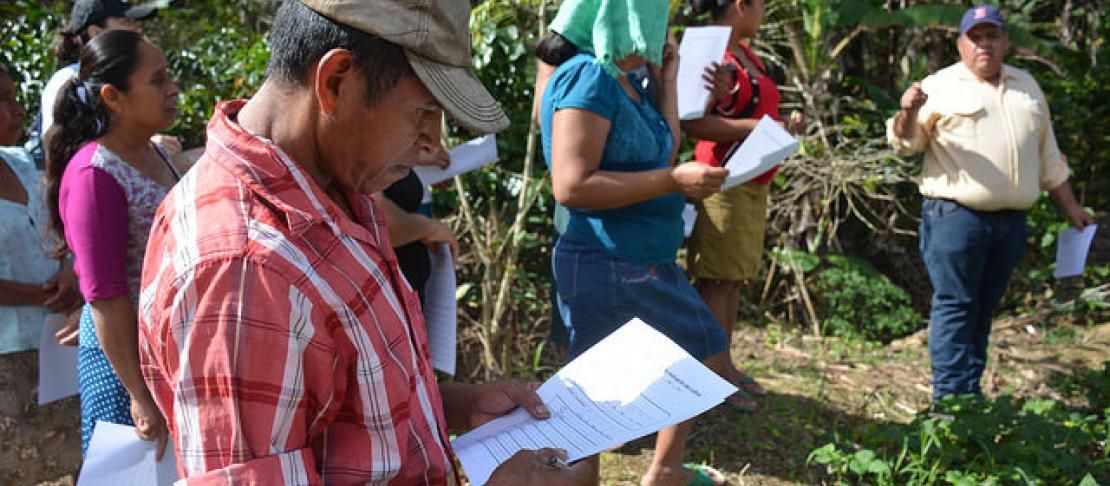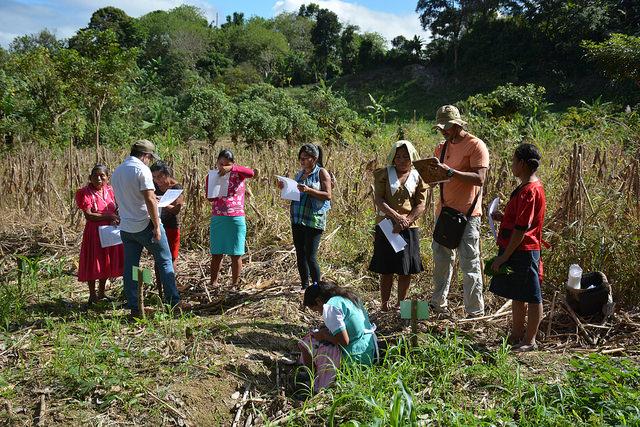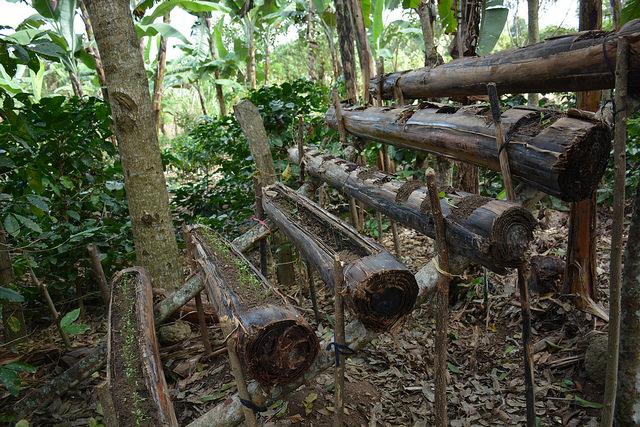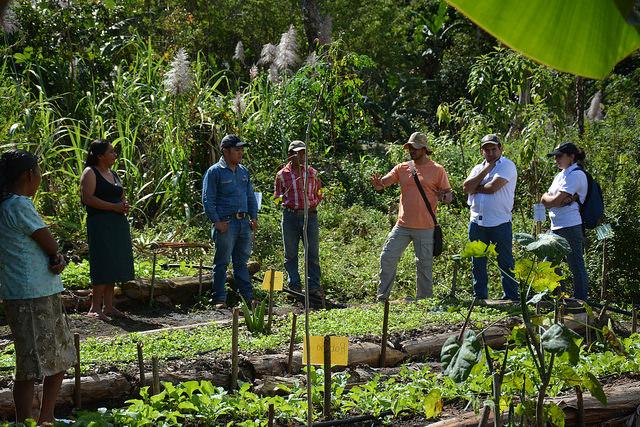Judging the beans in the Guatemalan heights

Stepping up participatory practices in the Climate-Smart Village of Olopa.
The narrow path to the fields doesn’t cut us any slack. It goes up and up, treacherous at times as last night’s rain bit into the ground.
We pass the coffee bushes bursting with red; sitting on low chairs, a few men handle the leafy branches, looking for the deep, brightly colored cherries. The coffee harvest is on in the La Prensa community, part of Olopa, the Climate-Smart Village (CSV) in eastern Guatemala, close to the Honduran border.
We finally emerge from the shadows into the scorching morning sun. There must be about fifteen women, all brightly dressed, tending to the field under our eyes. We’re here to see the beans. It’s an experimental field, where the CGIAR Research Program on Climate Change, Agriculture and Food Security (CCAFS) Latin America, together with its partners, has helped farmers grow beans with improved characteristics, so that the community would diversify their diet and become more resilient in the face of climate variability.
The women walk through the rows of plants checking the leaves, as they have done many times before since this initiative started, as part of implementing climate-smart agricultural practices in Olopa, one of the three CSVs in Central America.

Farmers in the La Prensa community of Olopa CSV are evaluating the performance of bean varieties. Photo: Alexandra Popescu (CCAFS)
Armando, the technician that works with the community and Jose Gabriel, from the Tropical Agricultura Research and Higher Education Center (CATIE) give out the evaluation forms that will show how the beans have fared. The participatory element of climate-smart agriculture is critical, as it provides data rooted in local farmers’ perceptions and it increases their understanding and acceptance of new crops and practices.
The forms look at a few basic characteristics for each of the six bean varieties present in the field: plant’s upright position, pests and diseases, with farmers needing to choose from a scale that goes from “very bad” to “very good”. The results are mixed, with some varieties faring better than others. Closing the communication gap between researchers, technicians and the farmers involves reaching a common vocabulary on how we look at plants and their characteristics, and continue to strengthen and build it. Follow-up on plant variety behavior also involves respecting and following the preferences of farmers who interpret the signs of the weather and of the earth based on their experiences.
Where are all the men? I ask. “Con el café”, the women smile at me. This is the time when work splits up the village. So the women take us next on a tour of the practices they are using to build up their food security and self-sufficiency. Under the canopy it’s cool enough to breathe. It’s under this shadow that six or seven logs follow each other in a staircase-like structure to produce a vertical garden. From each log thin sprouts shoot up from the dirt placed inside, announcing a future generation of vegetables.

Vertical garden, a climate-smart agricultural practice used in Olopa CSV, Guatemala. Photo: Alexandra Popescu (CCAFS)
We head up the hill again to the community’s vegetable garden that has been revived and diversified within the CSA project in La Prensa. The water tank fed by rainwater is looking over the sloping garden where the villagers grow yucca, aloe vera, bananas, moringa, rosemary, basil and other herbs. It’s a lush basket of nutritious crops feeding the community and supplying their revenues outside the coffee season. Local farmers have gradually embraced CSA practices that improve their livelihoods and that improve communicating with researchers and experts working locally.

The community garden in La Prensa, Olopa CSV, has been diversified and improved using climate-smart agriculture practices. Photo: Alexandra Popescu (CCAFS)
Building food security in Guatemala, where a combination of poverty, climate variability and extreme weather events undermine food safety nets, is ongoing work. CCAFS and its partners in the region are strengthening the community of Olopa to further create momentum for scaling climate-smart agriculture at regional and national level, while fine tuning practices and knowledge exchanges with the farmers.
Read more:
The project team working in Olopa CSV: CCAFS, CATIE, Mancomunidad Copan Ch’orti, Secretaria Ejecutiva del Plan Trifinio and Bioversity International.
Alexandra Popescu is the communication officer for CCAFS Latin America.



